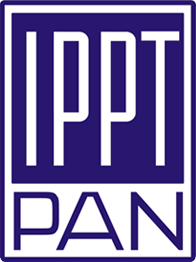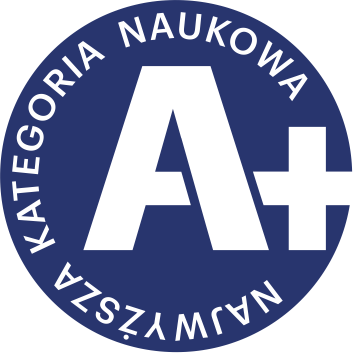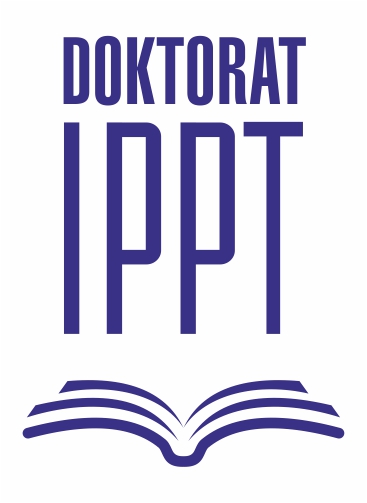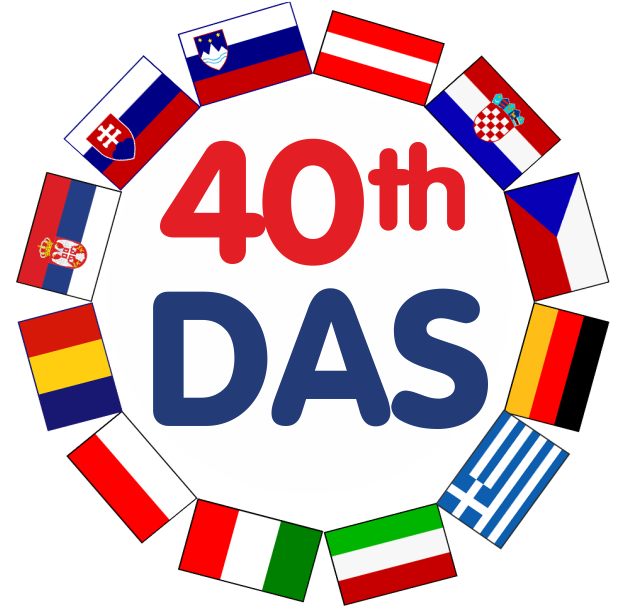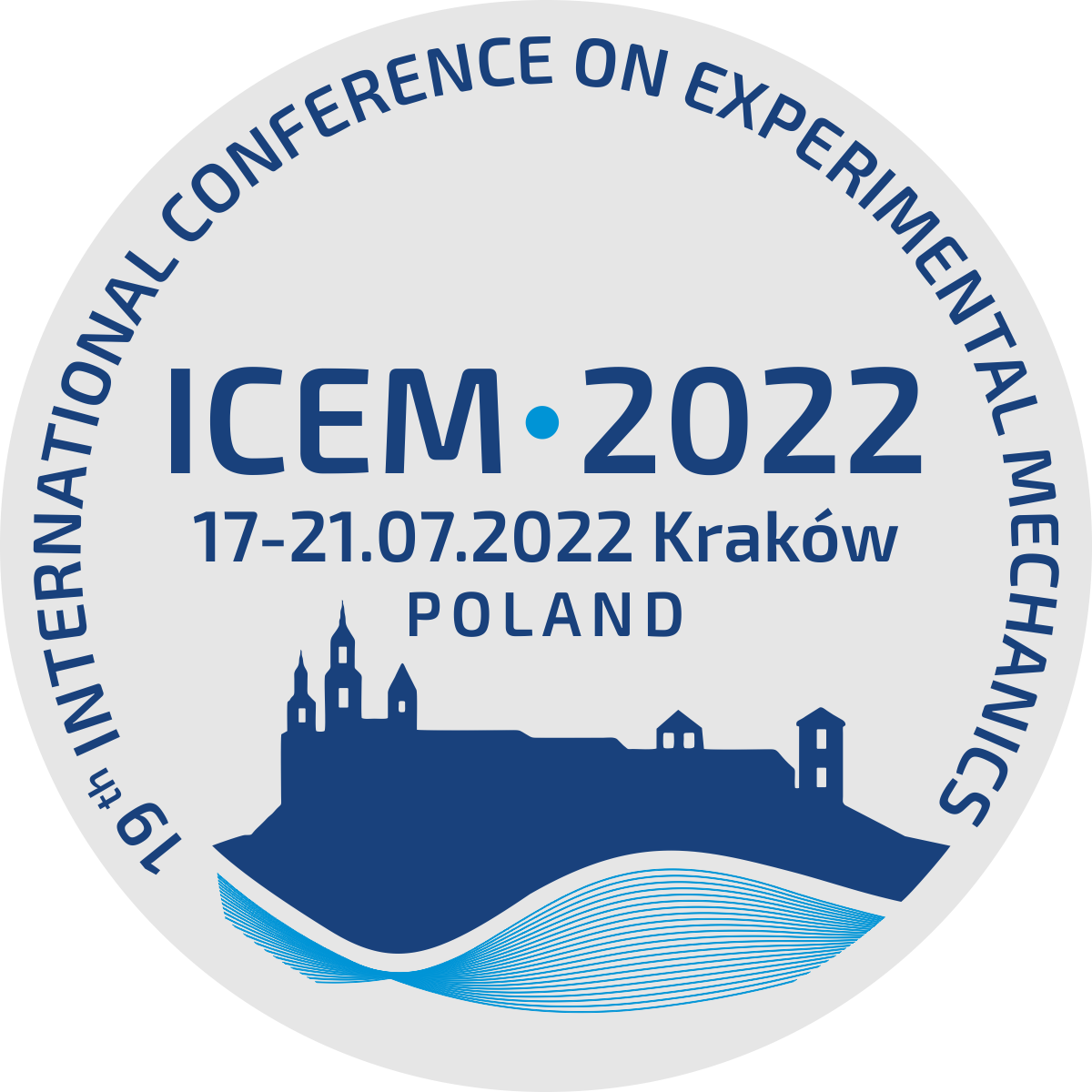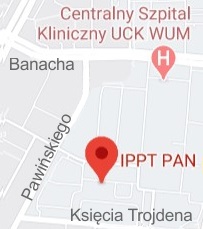| mgr inż. Mariusz Ostrowski |

|
|
Ostatnie publikacje
| 1. |
Ostrowski M., Mikułkowski G., Błachowski B., Jankowski Ł., Experimental assessment of Bayesian and mode matching approaches for parametric identification of bolted connections,
MECHANICAL SYSTEMS AND SIGNAL PROCESSING, ISSN: 0888-3270, DOI: 10.1016/j.ymssp.2023.110652, Vol.201, pp.110652-110652, 2023 Streszczenie: Słowa kluczowe:
| 200p. | |||||||||||||||||||||||||
| 2. |
Ostrowski M., Błachowski B., Mikułowski G., Jankowski Ł., Influence of Noise in Computer-Vision-Based Measurements on Parameter Identification in Structural Dynamics,
SENSORS, ISSN: 1424-8220, DOI: 10.3390/s23010291, Vol.23, No.1, pp.1-27, 2023 Streszczenie: Słowa kluczowe:
| 100p. | |||||||||||||||||||||||||
| 3. |
Ostrowski M., Jedlińska A., Popławski B., Błachowski B., Mikułowski G., Pisarski D., Jankowski , Sliding Mode Control for Semi-Active Damping of Vibrations Using On/Off Viscous Structural Nodes,
Buildings, ISSN: 2075-5309, DOI: 10.3390/buildings13020348, Vol.13, No.2, pp.1-16, 2023 Streszczenie: Słowa kluczowe:
| 70p. | |||||||||||||||||||||||||
| 4. |
Ostrowski M., Błachowski B., Wójcik B.♦, Żarski M.♦, Tauzowski P., Jankowski Ł., A framework for computer vision-based health monitoring of a truss structure subjected to unknown excitations,
Earthquake Engineering and Engineering Vibration, ISSN: 1993-503X, DOI: 10.1007/s11803-023-2154-3, pp.1-17, 2023 Streszczenie: Słowa kluczowe:
| 70p. | |||||||||||||||||||||||||
| 5. |
Żarski M.♦, Wójcik B.♦, Miszczak J.A.♦, Błachowski B., Ostrowski M., Computer Vision based inspection on post-earthquake with UAV synthetic dataset,
IEEE Access, ISSN: 2169-3536, DOI: 10.1109/ACCESS.2022.3212918, pp.1-11, 2022 Streszczenie: Słowa kluczowe:
| 100p. | |||||||||||||||||||||||||
| 6. |
Garus S.♦, Błachowski B., Sochacki W.♦, Jaskot A.♦, Kwiatoń P.♦, Ostrowski M., Šofer M.♦, Kapitaniak T.♦, Mechanical vibrations: recent trends and engineering applications,
BULLETIN OF THE POLISH ACADEMY OF SCIENCES: TECHNICAL SCIENCES, ISSN: 0239-7528, DOI: 10.24425/bpasts.2022.140351, Vol.70, No.1, pp.1-12, 2022 Streszczenie: Słowa kluczowe:
| 100p. | |||||||||||||||||||||||||
| 7. |
Ostrowski M., Błachowski B., Popławski B., Pisarski D., Mikułowski G., Jankowski Ł., Semi‐active modal control of structures with lockable joints: general methodology and applications,
STRUCTURAL CONTROL AND HEALTH MONITORING, ISSN: 1545-2255, DOI: 10.1002/stc.2710, Vol.28, No.5, pp.e2710-1-24, 2021 Streszczenie: Słowa kluczowe:
| 140p. | |||||||||||||||||||||||||
| 8. |
Błachowski B., Świercz A., Ostrowski M., Tauzowski P., Olaszek P.♦, Jankowski Ł., Convex relaxation for efficient sensor layout optimization in large‐scale structures subjected to moving loads,
Computer-Aided Civil and Infrastructure Engineering, ISSN: 1093-9687, DOI: 10.1111/mice.12553, Vol.35, No.10, pp.1085-1100, 2020 Streszczenie: Słowa kluczowe:
| 140p. | |||||||||||||||||||||||||
| 9. |
Ostrowski M., Błachowski B., Bocheński M.♦, Piernikarski D.♦, Filipek P.♦, Janicki W.♦, Design of nonlinear electromagnetic energy harvester equipped with mechanical amplifier and spring bumpers,
BULLETIN OF THE POLISH ACADEMY OF SCIENCES: TECHNICAL SCIENCES, ISSN: 0239-7528, DOI: 10.24425/bpasts.2020.135384, Vol.68, No.6, pp.1-11, 2020 Streszczenie: Słowa kluczowe:
| 100p. | |||||||||||||||||||||||||
| 10. |
Ostrowski M., Błachowski B., Jankowski Ł., Pisarski D., Modal energy transfer by controlled structural connections,
DIAGNOSTYKA, ISSN: 1641-6414, DOI: 10.29354/diag/116692, Vol.21, No.1, pp.61-70, 2020 Streszczenie: Słowa kluczowe:
| 20p. | |||||||||||||||||||||||||
| 11. |
Bocheński M.♦, Augustyniak M.♦, Ostrowski M., Jarzyna W.♦, The influence of control algorithms on the effectiveness of vibration reduction of an active composite beam,
PRZEGLĄD ELEKTROTECHNICZNY, ISSN: 0033-2097, DOI: 10.15199/48.2016.08.45, No.8, pp.166-169, 2016 Streszczenie: Słowa kluczowe:
| 14p. | |||||||||||||||||||||||||
| 12. |
Filipek P.Z.♦, Ostrowski M.♦, Optimal energy source for an environmentally-friendly go-kart,
Journal of Ecological Engineering, ISSN: 2299-8993, DOI: 10.12911/22998993/65454, Vol.17, No.5, pp.90-95, 2016 Streszczenie: Słowa kluczowe:
| 12p. | |||||||||||||||||||||||||
| 13. |
Ostrowski M., Jarzyna W.♦, Redukcja drgań obiektu nieliniowego z regulatorem adaptacyjnym proporcjonalno-różniczkującym o strukturze MRAS,
IAPGOŚ, ISSN: 2083-0157, DOI: 10.5604/20830157.1194278, Vol.6, No.1, pp.51-54, 2016 Streszczenie: Słowa kluczowe:
| 7p. |
Lista rozdziałów w ostatnich monografiach
|
1. |
Ostrowski M., Błachowski B., Jankowski Ł., Pisarski D., Projektowanie i dynamika urządzeń mechatronicznych, rozdział: Structural vibration control using semi-actively switched lockable joints, Katedra Robotyki i Mechatroniki AGH, pp.221-228, 2019 |
Prace konferencyjne
| 1. |
Ostrowski M., Jedlińska A., Popławski B., Błachowski B., Mikułowski G., Pisarski D., Jankowski Ł., Semi-active sliding-mode control for local mitigation of structural vibrations by means of on/off nodes,
SMART 2023, 10th ECCOMAS Thematic Conference on Smart Structures and Materials, 2023-07-03/07-05, Patras (GR), pp.538-548, 2023 Streszczenie: Słowa kluczowe:
| ||||||||||||||||||||||
| 2. |
Mikułowski G., Ostrowski M., Błachowski B., Jankowski Ł., Experimental verification of a semi-active modal control algorithm for structures with lockable joints,
SMART 2023, 10th ECCOMAS Thematic Conference on Smart Structures and Materials, 2023-07-03/07-05, Patras (GR), No.446236, pp.572-581, 2023 Streszczenie: Słowa kluczowe:
| ||||||||||||||||||||||
| 3. |
Ostrowski M., Błachowski B., Mikułowski G., Jankowski Ł., Semi-active modal control based on the energy transfer between structural vibration modes,
SMART 2023, 10th ECCOMAS Thematic Conference on Smart Structures and Materials, 2023-07-03/07-05, Patras (GR), pp.526-537, 2023 Streszczenie: Słowa kluczowe:
| ||||||||||||||||||||||
| 4. |
Błachowski B., Ostrowski M., Mikułowski G., Jankowski Ł., Mode matching vs Bayesian approach for model updating of frame structure with uncertain bolted connection,
ISMA2022 / USD2022, International Conference on Noise and Vibration Engineering / International Conference on Uncertainty in Structural Dynamics, 2022-09-12/09-14, Leuven (BE), pp.1325-1334, 2022 Streszczenie:
| 20p. | |||||||||||||||||||||
| 5. |
Błachowski B., Ostrowski M., Żarski M.♦, Wójcik B.♦, Tauzowski P., Jankowski Ł., An Efficient Computer Vision-Based Method for Estimation of Dynamic Displacements in Spatial Truss Structures,
EWSHM 2022, 10th European Workshop on Structural Health Monitoring, 2022-07-04/07-07, Palermo (IT), DOI: 10.1007/978-3-031-07258-1_49, Vol.254, pp.474-484, 2022 Streszczenie: Słowa kluczowe:
| 20p. | |||||||||||||||||||||
| 6. |
Błachowski B., Świercz A., Ostrowski M., Tauzowski P., Jankowski Ł., Multi-type sensor placement for structural health monitoring of tied-arch bridges,
EWSHM 2020, 10th European Workshop on Structural Health Monitoring, 2020-07-04/07-07, Palermo (IT), DOI: 10.1007/978-3-030-64594-6_29, Vol.127, pp.286-297, 2021 Streszczenie: Słowa kluczowe:
| ||||||||||||||||||||||
| 7. |
Błachowski B., Ostrowski M., Tauzowski P., Świercz A., Jankowski Ł., Sensor placement for structural damage identification by means of topology optimization,
PCM-CMM, 4th Polish Congress of Mechanics, 23rd International Conference on Computer Methods in Mechanics, 2019-09-08/09-12, Kraków (PL), DOI: 10.1063/5.0007817, Vol.2239, No.1, pp.020002-1-11, 2020 Streszczenie:
| 20p. | |||||||||||||||||||||
| 8. |
Ostrowski M., Błachowski B., Jankowski Ł., Pisarski D., Inverse Lyapunov based method for semi-active control of energy transfer between vibration modes,
SMART 2019, 9th ECCOMAS Thematic Conference on Smart Structures and Materials, 2019-07-08/07-11, Paris (FR), pp.345-356, 2019 Streszczenie: Słowa kluczowe:
|
Abstrakty konferencyjne
| 1. |
Tauzowski P., Jarosik P., Żarski M.♦, Wójcik B.♦, Ostrowski M., Blachowski B.♦, Jankowski Ł., Computer vision-based inspections of civil infrastructure,
Modelling in Mechanics 2022, 2022-05-26/05-27, Rožnov pod Radhoštěm (CZ), pp.1-7, 2022 Streszczenie: Słowa kluczowe:
| |||||||||||||||||||||||||||||||||||||
| 2. |
Ostrowski M., Błachowski B., Mikułowski G., Jankowski Ł., Comparison of mode matching and bayesian approach for parametric identification of frames with bolted connections,
EACS 2022, 7th European Conference on Structural Control, 2022-07-10/07-13, Warszawa (PL), pp.86-86, 2022 Streszczenie:
| |||||||||||||||||||||||||||||||||||||
| 3. |
Ostrowski M., Błachowski B., Żarski M.♦, Wójcik B.♦, Tauzowski P., Jankowski Ł., Comparison of the accuracy of computer vision-based methods for estimation of structural displacements using synthetic video data,
EACS 2022, 7th European Conference on Structural Control, 2022-07-10/07-13, Warszawa (PL), pp.66-67, 2022 Streszczenie:
| |||||||||||||||||||||||||||||||||||||
| 4. |
Jankowski Ł., Popławski B., Ostrowski M., Jedlińska A., Mikułowski G., Błachowski B., Pisarski D., Wiszowaty R., Mróz A., Orłowska A., Hou J.♦, Holnicki-Szulc J., Semi-active mitigation of free and forced vibrations by means of truss-frame nodes,
CMM-SolMech 2022, 24th International Conference on Computer Methods in Mechanics; 42nd Solid Mechanics Conference, 2022-09-05/09-08, Świnoujście (PL), pp.1-2, 2022 Streszczenie:
| |||||||||||||||||||||||||||||||||||||
| 5. |
Ostrowski M., Błachowski B., Mikułowski G., Jankowski Ł., Identification of dynamic characteristics of uncertain bolted connections in a frame structure,
CMM-SolMech 2022, 24th International Conference on Computer Methods in Mechanics; 42nd Solid Mechanics Conference, 2022-09-05/09-08, Świnoujście (PL), pp.1-2, 2022 Streszczenie:
| |||||||||||||||||||||||||||||||||||||
| 6. |
Ostrowski M., Błachowski B., Żarski M.♦, Wójcik B.♦, Tauzowski P., Jankowski Ł., Computer vision-based vibration measurement,
Modelling in Mechanics 2022, 2022-05-26/05-27, Rožnov pod Radhoštěm (CZ), pp.1-6, 2022 Streszczenie: Słowa kluczowe:
| |||||||||||||||||||||||||||||||||||||
| 7. |
Ostrowski M., Błachowski B., Świercz A., Tauzowski P., Olaszek P.♦, Jankowski Ł., Efficient Method for Optimal Sensor Placement in Large-scale Structures,
CIMTEC 2022, 15th International Conference on Modern Materials and Technologies - 9th Forum on New Materials, 2022-06-25/06-29, Perugia (IT), pp.1, 2022 Streszczenie:
| |||||||||||||||||||||||||||||||||||||
| 8. |
Jankowski Ł., Popławski B., Ostrowski M., Jedlińska A., Mikułowski G., Błachowski B., Pisarski D., Wiszowaty R., Mróz A., Holnicki-Szulc J., Semi-active damping of structural vibrations using controllable truss-frame nodes,
8WCSCM, 8th World Conference on Structural Control and Monitoring, 2022-06-05/06-08, Orlando, Florida (US), pp.1, 2022 Streszczenie:
| |||||||||||||||||||||||||||||||||||||
| 9. |
Ostrowski M., Błachowski B., Mikułowski G., Jankowski Ł., Parametric identification of uncertain bolted connections with Bayesian approach,
LSCE, XXVII Conference of Lightweight Structures in Civil Engineering, 2021-12-02/12-03, Łódź (PL), pp.93-96, 2021 Streszczenie: Słowa kluczowe:
| |||||||||||||||||||||||||||||||||||||
| 10. | Ostrowski M., Błachowski B., Mikułowski G., Jankowski Ł., Bayesian approach for efficient identification of highly uncertain structural parameters, WEO 2021, 2nd Workshop on Engineering Optimization, 2021-10-07/10-08, Warszawa (PL), pp.39-43, 2021 | |||||||||||||||||||||||||||||||||||||
| 11. |
Ostrowski M., Świercz A., Błachowski B., Tauzowski P., Jankowski Ł., Optimization of Sensor Placement Using Continuous Approaches,
WEO2019, Workshop on Engineering Optimization 2019, 2019-11-04/11-04, Warszawa (PL), pp.22-23, 2019 Streszczenie:
| |||||||||||||||||||||||||||||||||||||
| 12. |
Ostrowski M., Błachowski B., Jankowski Ł., Pisarski D., Półaktywne sterowanie drganiami konstrukcji przy użyciu dynamicznie aktywowanych połączeń,
SAM2019, XVIII Szkoła Analizy Modalnej, 2019-06-06/06-07, Kraków (PL), pp.1, 2019 Streszczenie: Słowa kluczowe:
| |||||||||||||||||||||||||||||||||||||
| 13. |
Ostrowski M., Błachowski B., Jankowski Ł., Pisarski D., Semi-Active Control of Mechanical Energy Transfer Between Vibrational Modes,
SolMech 2018, 41st SOLID MECHANICS CONFERENCE, 2018-08-27/08-31, Warszawa (PL), No.P136, pp.408-409, 2018 Streszczenie: Słowa kluczowe:
|
